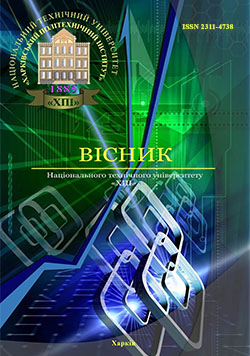MODELS OF PROJECT REVERSE ENGINEERING
DOI:
https://doi.org/10.20998/2413-3000.2017.1224.9Keywords:
reverse engineering, heuristic methods, model of executive phaseAbstract
Reverse engineering decided important scientific and technical problems of increasing the cost of the existing technical product by transforming it into a product with other features or design. Search ideas of the new application of existing products on the base of heuristic analysis were created. The concept of reverse engineering and its division into three types: conceptual, aggregate and complete was expanded. The use of heuristic methods for reverse engineering concept was showed. The modification model of Reverse engineering based on the model of РМВОК was developed. Our model includes two new phases: identification and transformation. At the identification phase, technical control is made. At the transformation phase, search heuristic idea of the new applied existing technical product was made. The model of execution phase that included heuristic methods, metrological equipment, and CAD/CAM/CAE program complex was created. The model that connected economic indicators of reverse engineering project was developed.
References
Varady T., Martin R., Cox J. Reverse engineering of geometric models – an introduction. Computer–Aided Design. 1997, no 29 (4), pp. 255–268. doi.org/10.1016/s0010-4485(96)00054-1
Behrens W., Hawranek P. M. Manual for the preparation of industrial feasibility studies. Newly revised and expanded edition. Vienna, United nations industrial development organization, 1991. – 342 p. Available at: https://owaisshafique.files.wordpress.com/2011/04/manual_for_the_preparation_of_industrial_feasibility_studies.pdf. (accessed 29.11.2016)
A Guide to the Project Management Body of Knowledge (PMBOK Guide). Project Management Institute, 2008. Available at: http://www.pmi.org/PMBOK-Guide-and-Standards/pmbok-guide.aspx. (accessed 29.11.2016)
Mosse R., Sontheimer L.E. Performance Monitoring Indicators. Handbook. Washington, D. C., The International Bank for Reconstruction and Development, 1996 – 334 p.
McConnell C., Brue S. Economics: Principles, Problems, & Policies. New York, McGraw–Hill Education, 1994. – 773 p.
Bushuev S. D., Bushueva N. S. Modeli i metody strategicheskogo razvitija organizacij ot videnija k real'nosti. [Models and methods of organizational strategic development from “vision” to reality]. Upravlinnya proektamy ta rozvytok vyrobnytstva. [Project management and Production Development]. Lugansk, West National University of V. Dal’ Publishing, 2005, no 4 (16), pp. 5–13.
Tanaka H., Bushuyev S. Innovative development and meta program management of a new generation of mega projects in the oil & gas and infrastructure sectors. Upravlinnya rozvytkom skladnykh system [Managing the development of complex systems]. 2013, no 16.
Shahov A. V. Proektirovanie zhiznennogo tsikla remontoprigodnyih tehnicheskih sistem [Designing serviceable life cycle of technical systems]. Odesa, Feniks, 2005. 164 p.
Ivanov V. V. Evristicheskie modeli v mashinostroenii [Heuristic models in engineering]. Odesa, A. O. Bahva, 2012. 234 p.
Ivanov, V. V. Upravlenie proektami obratnogo inzhiniringa [Reverse Engineering Project Management]. Visnyk natsional'noho tekhnichnoho universytetu KhPI [Bulletin of the National Technical University KPI]. 2015, no 1, pp. 122–127.
Downloads
Published
Issue
Section
License
Copyright (c) 2017 Віктор Володимирович ІВАНОВ

This work is licensed under a Creative Commons Attribution-NonCommercial-ShareAlike 4.0 International License.
Our journal abides by the Creative Commons copyright rights and permissions for open access journals.
Authors who publish with this journal agree to the following terms:
Authors hold the copyright without restrictions and grant the journal right of first publication with the work simultaneously licensed under a Creative Commons Attribution-NonCommercial-ShareAlike 4.0 International License (CC BY-NC-SA 4.0) that allows others to share the work with an acknowledgement of the work's authorship and initial publication in this journal.
Authors are able to enter into separate, additional contractual arrangements for the non-commercial and non-exclusive distribution of the journal's published version of the work (e.g., post it to an institutional repository or publish it in a book), with an acknowledgement of its initial publication in this journal.
Authors are permitted and encouraged to post their published work online (e.g., in institutional repositories or on their website) as it can lead to productive exchanges, as well as earlier and greater citation of published work.

